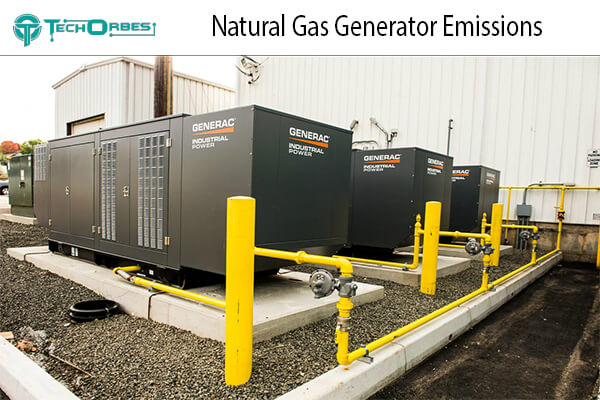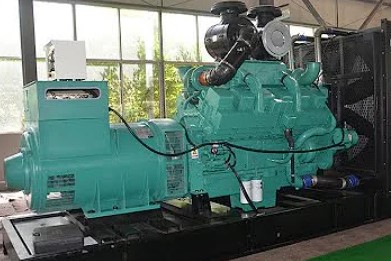Natural Gas Generator Emissions | All You Need To Know
Are you ready to know Natural Gas Generator Emissions? The demand for sustainable energy sources has increased over the past few years. Many people choose a power production source differently as businesses and homeowners start considering the environment’s influence and overall fuel cost. Natural gas generators, one of the most popular greener options, are seen as the bridge between fossil fuels and renewable energy.
The shale gas drilling boom has raised awareness of natural gas as a cleaner energy source in the United States. This technology has enabled record oil and gas production levels despite being previously dismissed as impractical.
But in some situations, is natural gas a better option? Who should think about using a natural gas generator? All you need to know about Natural Gas Generator Emissions and why they are frequently more environmentally friendly than other choices are below.
Table of Contents
Natural Gas Generator Emissions
One of the most popular cleaner alternatives, natural gas generators, is widely regarded as the link between the past of fossil fuels and the future of renewable energy.
- Sulfur Dioxide (SO2)
- Sulfur Dioxide (SO2)
- Nitrogen Oxides (NOx)
- Mercury (Hg)

Although these levels seem a little concerning, they are not that much of a concern compared to alternative fuel sources. Since the difference in emissions between natural gas and other fuel sources is so large, the United States Environmental Protection Agency (EPA) has less strict restrictions for natural gas generators than diesel generators.
Let’s check out the numbers. Based to the United States Energy Information Administration, natural gas produces about 117 pounds of carbon dioxide per million British thermal units (MMBtu). In comparison, coal and distillate fuel oil produce over 200 and 160 pounds of CO2 per MMBtu, respectively (USEIA).
The data demonstrates that natural gas is a cleaner solution than other fuels when seeking environmentally friendly options, even though this may sound complex. Transportation has a different effect on the environment than other factors.
Since natural gas is fed directly into the generator when used, it is typically safer and less dangerous to transport than diesel or gasoline. This is a far superior option for several applications because the risk of a spill or fire is significantly reduced.
Noise pollution is a final factor that must be taken into account. As a backup building power source, natural gas generators are frequently quieter than other types, making them the best option for populated cities and neighborhoods.
What Is A Natural Gas Generator?
As its name suggests, a natural gas generator is a piece of machinery that uses natural gas to produce a backup or primary power source. They come in various sizes, from small and portable to large and heavy-duty, and are used for numerous applications.
They resemble conventional diesel generators greatly and are available in sizes ranging from small enough to fit in a closet to huge enough to run an entire hospital. Specific hybrid generators that run on both natural gas and conventional fuel are available on the market, offering flexibility during a disaster while being a little more challenging to find.

Standby power sources for home and commercial purposes are frequently natural gas generators. They do not require storing or transporting fuel because they can be connected to already-existing municipal gas lines. When the standby generator is activated, a consistent and stable supply of natural gas flows through the pipes. Find out more about gas-powered generators.
The Need For Cleaner Energy Sources
Nevertheless, every coin has two sides to it. Diesel generators are notorious for polluting the air despite their benefits. They release significant nitrogen oxides, carbon dioxide, and other pollutants into the atmosphere.
Moreover, you must store and manage the gasoline, and they are noisy. You already know that significant problems, including environmental deterioration, climate change, global warming, and resource depletion, threaten our society’s well-being.
Because of this, numerous regulatory agencies, such as the US Environmental Protection Agency, have imposed stringent carbon emissions regulations. This has consequently compelled business owners and homeowners to look for alternatives to conventional diesel generators.
Many cleaner and more renewable energy sources can be used for power backup, including wind, solar, and biofuel. On the other hand, natural gas generators are a form of generator that has been gaining popularity.
These natural gas-powered generators are considered a more sustainable solution for emergency power. They are less harmful to the environment, and some can even be made to use the natural gas that wellheads produce as a byproduct.
Yet, this does not imply that natural gas generators are the only green alternatives to conventional generators. In further detail, we’ll examine the advantages and disadvantages of natural gas generators in this blog to determine their value. Let’s get going.
Natural Gas Generators: A Closer Look
Natural gas, a fossil fuel of methane and other hydrocarbons, is used. It developed over millions of years due to the decay of plant and animal remnants buried deep beneath the earth’s surface. Under the earth’s surface, various layers of sedimentary rocks contain natural gas deposits imprisoned in fissures and cracks. This fossil fuel can also be found in various crude oil deposits and freestanding natural gas reserves.
Associated natural gas is the name given to this kind of gas. For many years, natural gas has been utilized to deliver piped gas to homes. But in recent years, it has become a more environmentally friendly backup power source than other fossil fuels.
These generators can power home and commercial buildings and generate energy using natural gas. A carburetor is used in a natural gas generator instead of a diesel generator to turn pressured gas into electricity.
Benefits Of Natural Gas Generators
The fact that using a natural gas generator is more environmentally friendly is its main benefit. Burning natural gas produces roughly 90% less carbon dioxide emissions than burning diesel and other fossil fuels.
Moreover, it emits only half as much sulfur dioxide, nitrogen oxides, mercury, and particulate matter as other pollutants. Because of this, natural gas generator rules at the federal and state levels are less strict than those for diesel generators.
It’s important to note that the municipal gas pipeline supply is directly connected to the natural gas plants. This makes it less dangerous because there is no need to store a lot of gasoline. Therefore, building a natural gas generator is more affordable in the long term despite the hefty initial cost. This is due to the lower price of natural gas compared to diesel. Also, it doesn’t call for any unique infrastructure or licenses for fuel storage.
How Do Natural Gas Generators Work?
The majority of natural gas generators function similarly to diesel generators. The two types of engines’ operational differences distinguish them most mechanically. A carburetor that is specifically made to handle the use of pressured gas is required for natural gas generators. The gas is stored or piped in from another source because it is liquid.

Natural gas generators have advantages and disadvantages, just as diesel generators. They can make operating within stringent pollution restrictions easier and more economical. Natural gas is the cleanest-burning fossil fuel, which explains why.
Running Natural Gas Generators With Raw Gas From Wellheads
There are a few more advantages to using natural gas generators for people in the oil and gas sector. Natural gas, or the raw form that results from extraction, is sometimes viewed as an unwanted byproduct in the oil and gas exploration industry because burning (or flaring) the gas is frequently a less expensive alternative due to the pipeline infrastructure required to capture and “scrub” the gas for use later.
But, because of recent developments, it is now possible to build up natural gas generators to run off wellhead gas that would otherwise be flared and squandered. As a result, fewer extra pollutants, including carbon dioxide, carbon monoxide, and particulates, are emitted into the atmosphere.
There are a few restrictions on this, though. As these generators are made to run on processed gas, it is only sometimes possible to connect them to wellheads and turn them on right away.
Because of this, the fuel must be examined, tested, and possibly scrubbed to make it appropriate for use in generators. Moisture and contaminants are eliminated during this procedure, the elimination of hydrogen sulfide (H2S), a frequent component of raw gas.
Over 25 parts per million (ppm) of H2S can harm the generator’s engine and other components. Scrubbing necessitates additional resources, including money. Determining whether it is even possible with your specific wellhead and location is why it is advisable to work with an expert if you want to use a natural gas generator in this environment.
Conclusion
The Natural Gas Generator Emissions are a green option because they emit fewer damaging pollutants and carbon dioxide. Further advantages include lower levels of odor and sound pollution, which may be important considerations depending on the region. Your demand and ability to connect your generator to a natural gas source as needed are the only significant deciding factors.
Frequently Asked Questions
Do natural gas generators emit CO2?
Natural gas generators have fewer NOx and CO2 emissions, fewer particle emissions, and almost no SO2 or mercury emissions than diesel generators.
What are the emissions from natural gas engines?
The regulated emissions of hydrocarbons, nitrogen oxides (NOx), carbon monoxide (C.O.), and carbon dioxide are among the emissions that should be of the most concern (CO2).
What emissions do generators produce?
The most popular kind of distributed generation, diesel generators, generate relatively significant levels of sulfur, carbon monoxide, nitrogen oxides, and particulate matter. A group of substances known as nitrogen oxides is responsible for air and water pollution.
How much CO2 does a natural gas plant produce?
Natural gas produces 490 grams of carbon dioxide (CO2) per kWh produced during its lifetime. While producing less CO2 than the other two fossil fuels, coal, and oil, it nonetheless directly impacts global warming.

Rayssa is a native American. A group of specialized individuals raised her with a passion for gaming. Here she discovered that computer games can expand your creative mind to infinite possibilities. In recent years, she has gone beyond gaming as a means of entertainment to enjoy it as a passio
